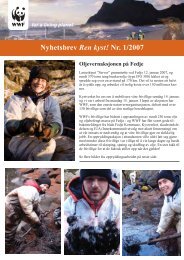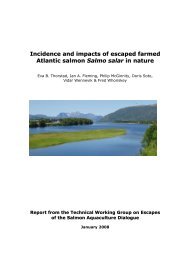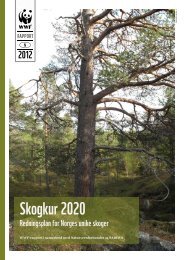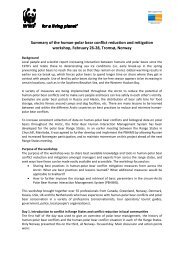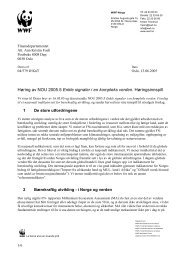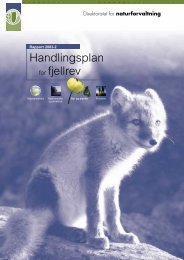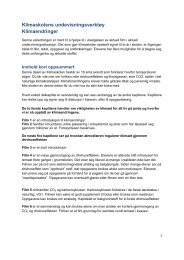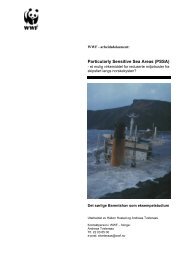Improved livelihoods and governance of natural resources ... - WWF
Improved livelihoods and governance of natural resources ... - WWF
Improved livelihoods and governance of natural resources ... - WWF
Create successful ePaper yourself
Turn your PDF publications into a flip-book with our unique Google optimized e-Paper software.
8. The community that will manage <strong>and</strong> benefit from the resource <strong>and</strong> the geographic extent <strong>of</strong> the resource which will be managed, must be clearly defined by the community itself, <strong>and</strong> legitimised by the government. This will provide both internal <strong>and</strong> external legitimacy, circumvent conflict over who is meant to manage <strong>and</strong> benefit, <strong>and</strong> prevent exploitation <strong>of</strong> the resource by outsiders. If the community defines itself, there is greater potential for developing an authority with required external <strong>and</strong> internal legitimacy xxx . This will also contribute to the sense <strong>of</strong> ownership (see point 3.1(7)), <strong>and</strong> to self determination <strong>and</strong> thus empowerment which also is an important benefit <strong>of</strong> successful CBNRM. 9. Equitable partnerships, collaboration <strong>and</strong> trust between local communities <strong>and</strong> the public <strong>and</strong> private sector are required. Such partnerships include those between the community <strong>and</strong> government agencies, with NGOs -‐ as supporters for communities <strong>and</strong> as supporters or challengers where necessary <strong>of</strong> governments -‐, <strong>and</strong> with the private sector investors. There is a potential imbalance <strong>of</strong> power between communities <strong>and</strong> the government <strong>and</strong> with private sector partners which can be addressed by facilitation <strong>and</strong> technical support from an external agency <strong>and</strong> provision <strong>of</strong> capacity building, <strong>and</strong> through security <strong>of</strong> tenure for communities <strong>and</strong> their knowledge <strong>of</strong> their rights xxxi . Trust is crucial to partnerships <strong>and</strong> building trust with communities <strong>and</strong> between communities <strong>and</strong> other stakeholders may take time, particularly if there have been failed interventions previously or other stakeholders have not treated them equitably in the past. CBNRM in southern Africa has been facilitated through successful longterm collaborations between communities <strong>and</strong> governments assisted by support organisations. For example, the CAMPFIRE Association (Zimbabwe) or the Namibian Association <strong>of</strong> CBNRM Support Organisations (NASCO), provide capacity building, technical support <strong>and</strong> policy inputs to communities <strong>and</strong> government partners <strong>and</strong>, as such, are crucial in promoting CBNRM in those countries xxxii . 4.2 Core principles <strong>of</strong> sustainable CBNRM relevant for practical programme implementation Both sets <strong>of</strong> principles outlined in points 3.1 above <strong>and</strong> 3.2 below are required for sustainable CBNRM. The principles outlined in point 3.1 above lay the foundation for sustainable CBNRM, <strong>and</strong> need to be in place before, or be put in place while, the principles below are applied. Similarly, the principles below need to be applied in practical programme implementation to complement those in 3.1. Implemented in synergy, they will contribute to sustainable CBNRM. 1. Capacity building is required to ensure that community members <strong>and</strong> their institutions have the required knowledge, skills <strong>and</strong> expertise to manage the <strong>resources</strong> <strong>and</strong> resulting income, <strong>and</strong> to negotiate with (<strong>and</strong> st<strong>and</strong> up to) other stakeholders xxxiii . There may be barriers hindering people from participating effectively in planning processes <strong>and</strong> from management, which need to be 7





